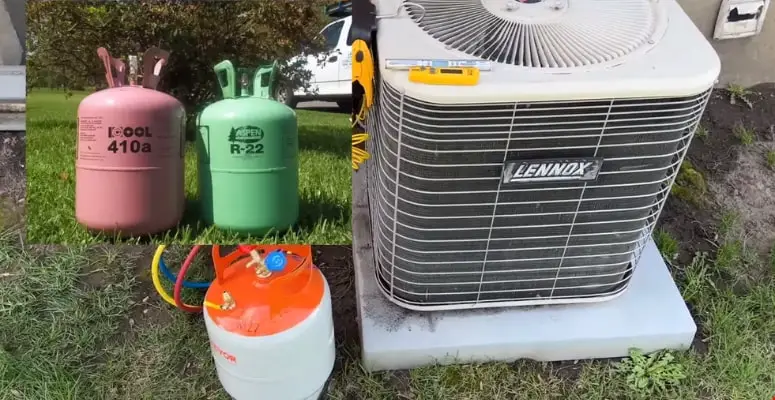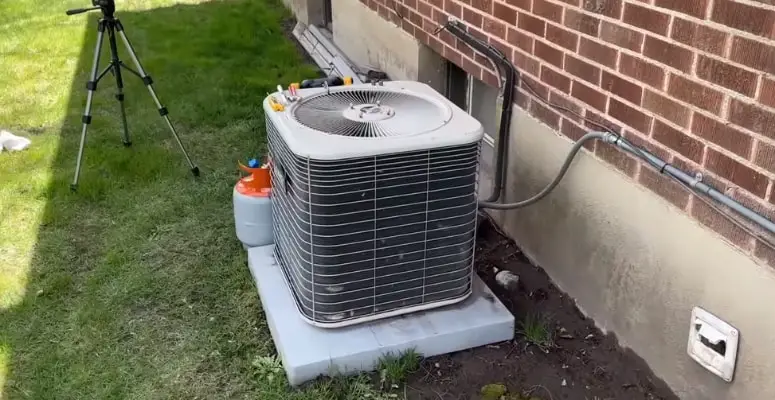Air conditioners have become an essential part of our life for most of us. With the temperatures rising with no limit whatsoever, these nifty devices keep us comfortable inside. If we focus on tropical areas, residential spaces fail to sustain without a proper AC. However, do you understand how air conditioners work?
An AC uses something called a refrigerant, which carries out the task of absorbing environmental heat and replacing it with cool air, thus providing superior comfort. Understanding the refrigerant that your AC uses is important when you want to determine the environmental and health concerns…
In this article, we have talked about the different types of refrigerants used in air conditioners worldwide. It needs to be noted that we will also talk about some history. Therefore, not all the refrigerants we have listed in this article are used in ACs.
Now that we have made things clear, shall we check out the different AC refrigerants?
About the Classification
Are you wondering how these refrigerants are classified in the first place? Well, there are two major factors at stake: chemical composition and chemical components. Based on the chemical composition, refrigerants can be classified into Chlorofluorocarbons (CFCs), Hydrochlorofluorocarbons (HCFCs), Hydrofluorocarbons (HFCs), and Natural Refrigerants.

The terms you see on the name are based on the chemical components — like Chlorine, Carbon, Flourine, and Hydrogen. These names also tell you about the impact of these refrigerants on the environment. There are a couple of factors like ODP and GWP that decide whether a particular chemical is harmful to the ozone layer or has global warming potential.
Due to its higher potential to cause ozone depletion and global warming, Chlorofluorocarbons are not being used as AC refrigerants anymore. An example of such CFC is a refrigerant called R12. Following the uproar regarding its impact on the ozone layer, the use of R12 was stopped by manufacturers. Instead, refrigerants with minimal impact on the ozone layer and the atmosphere were chosen.
We will now talk about the refrigerants currently used in Air Conditioners.
For one, it has a Global Warming Potential (GWP) which is 32% that of R-410A. Source: cielowigle.com
A new air conditioner manufactured after 2005 most likely does not use R-22 Freon, and air conditioners made after Jan. 1, 2010, are prohibited by law from using R-22 refrigerant. Source: home.howstuffworks.com
Different Types of Refrigerants
#1 R-134A
R-124A is perhaps the most popular air conditioner refrigerant that you can find today. A halo alkaline AC refrigerant with thermodynamic properties, R-134A is the technical name of Norflurane. Unlike the relatively problematic refrigerants like R-12 and R-22, R-134A is a single-compound refrigerant, not blended. Because the production does not involve blending, the refrigerant would not have a huge environmental impact per se. Another impressive part of the R-134A refrigerant is that it can easily replace the R-12 refrigerant in home and automobile Air Conditioning units. Considering all these aspects, the R-134A refrigerant is a better choice for the environment. It can compete with retro refrigerants in terms of cooling capability as well.
#2 R-407C
If you are looking for a refrigerant used in modern AC systems, you will come across the name R-407C. It has been designed to be accommodated in R-22 systems. Another component with thermodynamic and chemical properties, it can easily replace R-22 in a variety of spaces. Unlike the first one, however, R-407C is a blend of difluoromethane, pentafluoroethane, and 1,1,1,2-tetrafluoro-ethane. Direct expansion systems that are common in residential, commercial, and enterprise systems tend to use the R-407C refrigerant for long-term use. A unique characteristic of the refrigerant is that it can easily handle medium temperatures, thanks to the use of polyol ester oil. Also, we cannot ignore its minimal impact on the environment.
#3 R-410A
R-410A is another name you cannot miss when talking about the commonly used refrigerants for ACs and a few other heating/cooling systems. Like our second mention, this refrigerant is based on a blend of two other refrigerants: difluoromethane and pentafluoro ethane. Most importantly, though, the R-410A refrigerant is not ozone-depleting.
It means the refrigerant can be used in a variety of instances without any trouble.
We must also add that the product is more energy-efficient by multiple times. Therefore, you will see R-410A being used in machines that require a lot of power. Even if we keep air conditioning apart, R-410A can be seen on commercial refrigeration and cooling machines. It is just impressive that a refrigerant can provide better performance without any compromise on environmental friendliness.
#4 R-404A
R-404A is another safer alternative to the problematic R-22. The systems are designed to enable a cooling level of -45 degrees and 15 degrees. The wide temperature level means that R-404A can handle temperature cooling needs at wider levels. Even though R-404A retains the many properties we are familiar with on R-22, R-404A does not have an impact on the ozone layer. Similarly, the compound does not engage so fast with water and air. Therefore, air conditioning systems that need a temperature level so divers will have a great level of performance with R-404A.
The Bottom Line
We hope we have cleared most of your doubts regarding refrigerants used in air conditioners. It needs to be noted that we have only talked about the currently used refrigerants. Since the beginning of cooling and air conditioning, many refrigerants have been used. However, many of them were removed from the system due to their inefficiency or the environmental impact.
The ones on the list seem to have overcome these two major challenges while being suited for the varying cooling/heating needs of the residential/commercial spaces out there. Therefore, understanding which refrigerant is being used will help you recognize whether your air conditioning unit is efficient.

